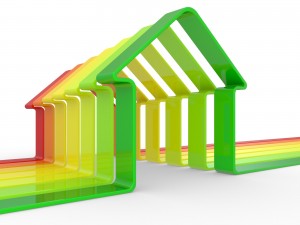Portuguese energy efficiency certification welcome but process flawed
The Portuguese law changed in August 2013 such that all properties being advertised for sale must have a valid Energy Efficiency Certificate. Otherwise owners can be fined from €250 to €3,740, while estate agencies advertising uncertified properties can be fined from €2,500 to €44,890.

Owners looking to sell a property now face a bill for several hundred euros before they can even test the market, let alone consider offers.
No wonder this is causing resentment, as all but the most serious sellers balk at the cost of certification and as agents are forced to compete for a shrinking pool of available properties for sale.
Prior to this, certification was only required at the time of the deed of sale. In fact, the change only brings Portugal into line with other EU countries, including the UK, although the UK insists only that a certificate has been requested, and UK certification costs are considerably lower.
In principle, owners with properties built to high standards of energy efficiency should welcome this change, as it helps to differentiate the generally superior build quality and thermal performance of these properties, as well as justifying a higher sales price. Similarly buyers should be willing to pay a higher purchase price in return for greater thermal comfort and lower running costs.
However, in practice, there are major limitations.
The first problem is that, based on a simple visual inspection of the property, it is impossible to obtain detailed information regarding the construction system and the thermal performance of the materials used. For example, a visual inspection would not reveal whether the roof is even insulated.
In the absence of full data, certifying professionals are allowed to use a simplified method to obtain a result, but this method is so crude that it will produce the same result whether the roof is insulated or not.
In the AlmaVerde roof specification, the sloping, timbered sections are formed using sandwich panels that incorporate 8 cm. of insulation, while the slabs forming the roof terraces are insulated externally to the same standard. This makes a huge difference in energy performance that can be completely overlooked using the simplified method.
A second problem is that passive design solutions are seldom given due consideration.
One example is the low importance given to thermal mass. Typical hollow baked clay bricks (tijolos) are considered equivalent to solid clay (adobe), rammed earth or even concrete, all of which do a far better job than tijolos of stabilizing internal temperatures without energy input. Tijolos have only a fraction of the mass of these materials, but hey, so long as the big bad wolf can’t blow it down, it’s fine, não é?
Another example is a ground cooling system such as AlmaVerde’s Coolhouse. This brings air into the house via underground tubes and a sub-floor plenum. Daytime summer air passing through these tubes is cooled by an average of 30 Celsius, making a critical difference to the already stabilized internal air temperature. Independent monitoring demonstrates an impressive 94% energy saving over conventional air conditioning that, in the simplified method, can safely be ignored.
By contrast, differences between more conventional heating and cooling systems are given undue weight. It is impossible to obtain the highest “A+” rating without a solar thermal or biomass domestic water heating system, even though the energy needed to keep a well-lagged tank of water hot is a tiny fraction of that needed to keep a house consistently warm in winter or cool in summer.
A third problem lies in the human element. Rightly or wrongly the process is seen as open to manipulation by the certifying professional, such that a suitably stuffed brown envelope can result in a higher rating.
As a result, the process is not only resented, it is not even being taken seriously. It is simply seen as yet another obstacle standing in the way of a more dynamic real estate market recovery.
In reality, the certifying professional has limited scope for manipulating the results, and the certifying body ADENE carries out spot checks to try to ensure that procedures are correctly followed.
The technical information necessary for a full evaluation can be obtained from the Ficha Técnica or else from the specialidades, the detailed technical projects submitted with the planning application, together with a declaration from the construction manager that these works were correctly completed. Copies of the necessary documents are available from the Municipality, if not from the construction manager.
When instructed to carry out a certification, the responsible engineer or architect is supposed to ask for the necessary technical information, but the onus appears to be on the owner to provide it. Otherwise, the certifying professional is allowed to use the simplified method.
Ficha Técnicas exist for all properties completed after late 2004, so at least for these properties ADENE could mandate the use of the Ficha Técnica and a full evaluation. This would go a long way to improving accuracy and consistency, but the extra work could drive up costs.
Despite its limitations, the full method gives most AlmaVerde-built properties an “A+” with solar thermal or “A” without. Otherwise, the simplified method yields a “B”, a result that signally fails to reflect the superior thermal performance of these unique properties.
At best, the current energy certification process is a work in progress.



